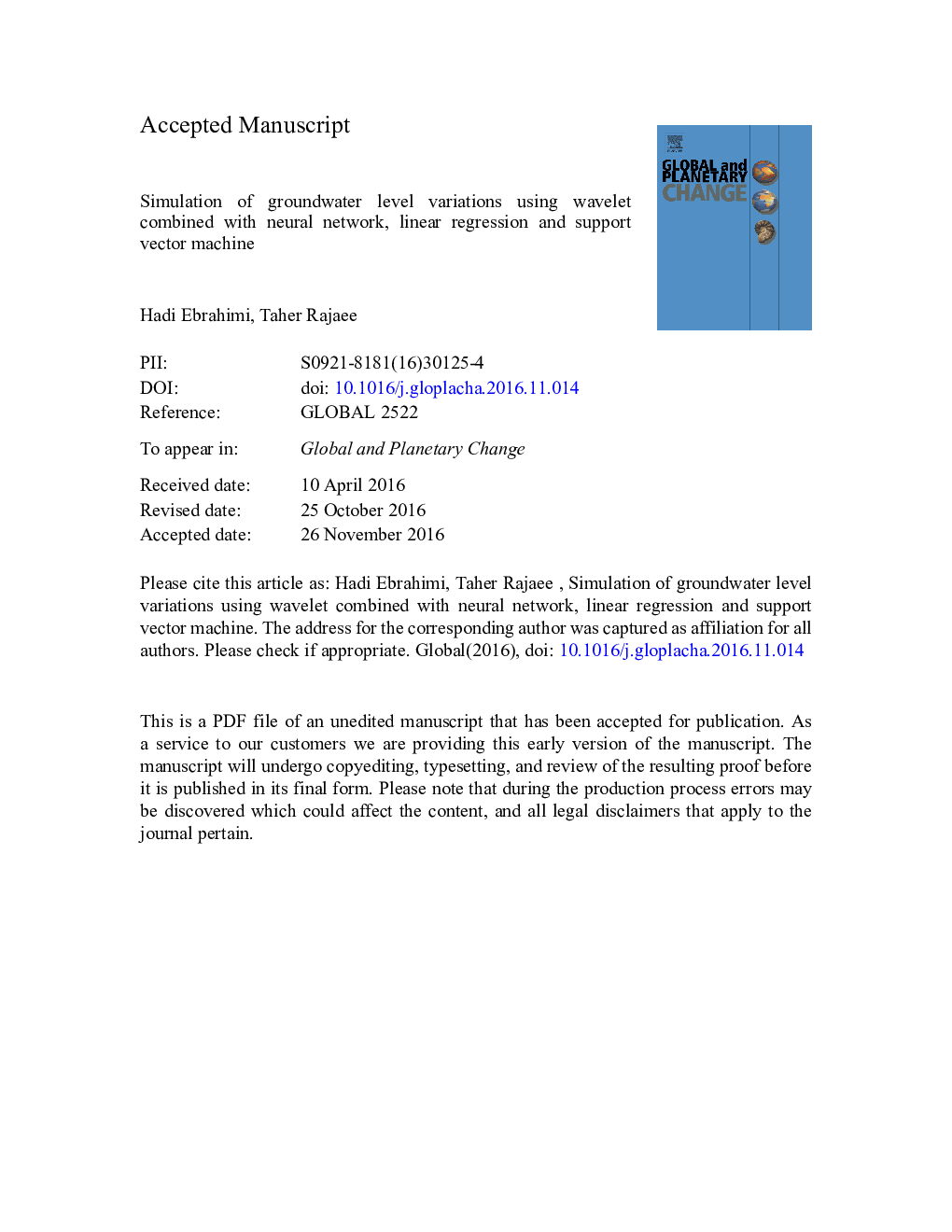| Article ID | Journal | Published Year | Pages | File Type |
|---|---|---|---|---|
| 5755364 | Global and Planetary Change | 2017 | 40 Pages |
Abstract
Simulation of groundwater level (GWL) fluctuations is an important task in management of groundwater resources. In this study, the effect of wavelet analysis on the training of the artificial neural network (ANN), multi linear regression (MLR) and support vector regression (SVR) approaches was investigated, and the ANN, MLR and SVR along with the wavelet-ANN (WNN), wavelet-MLR (WLR) and wavelet-SVR (WSVR) models were compared in simulating one-month-ahead of GWL. The only variable used to develop the models was the monthly GWL data recorded over a period of 11Â years from two wells in the Qom plain, Iran. The results showed that decomposing GWL time series into several sub-time series, extremely improved the training of the models. For both wells 1 and 2, the Meyer and Db5 wavelets produced better results compared to the other wavelets; which indicated wavelet types had similar behavior in similar case studies. The optimal number of delays was 6Â months, which seems to be due to natural phenomena. The best WNN model, using Meyer mother wavelet with two decomposition levels, simulated one-month-ahead with RMSE values being equal to 0.069Â m and 0.154Â m for wells 1 and 2, respectively. The RMSE values for the WLR model were 0.058Â m and 0.111Â m, and for WSVR model were 0.136Â m and 0.060Â m for wells 1 and 2, respectively.
Keywords
Related Topics
Physical Sciences and Engineering
Earth and Planetary Sciences
Earth-Surface Processes
Authors
Hadi Ebrahimi, Taher Rajaee,
